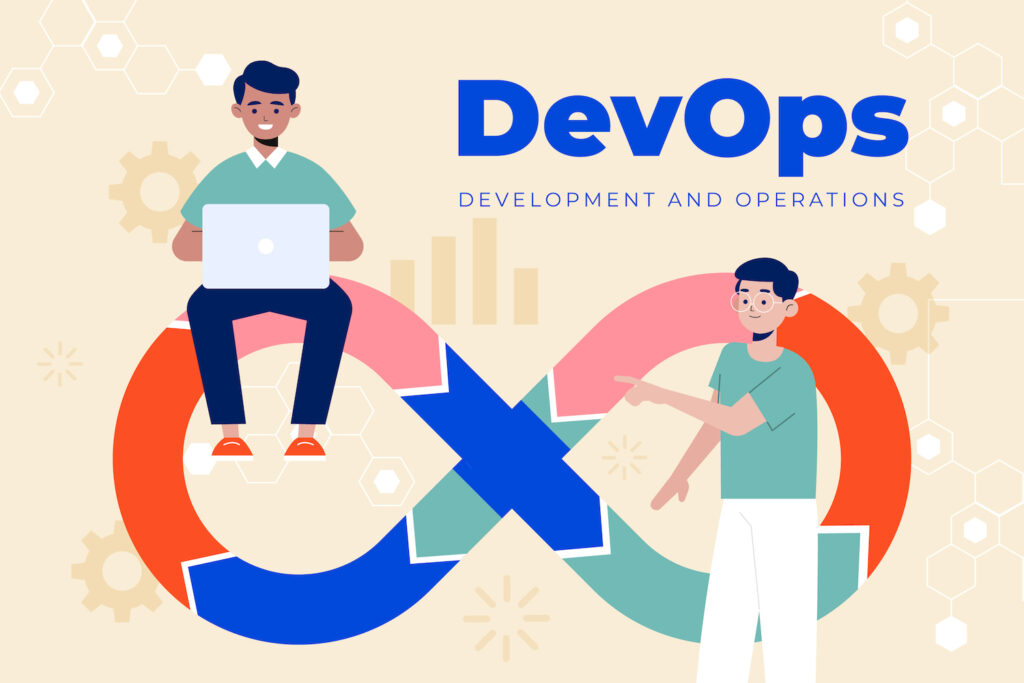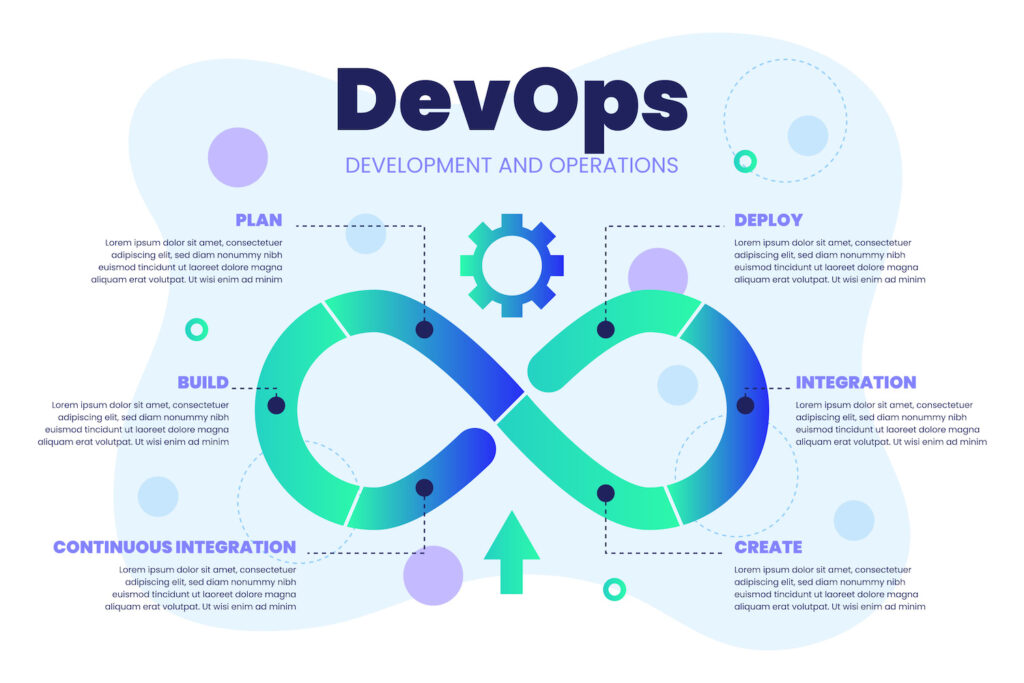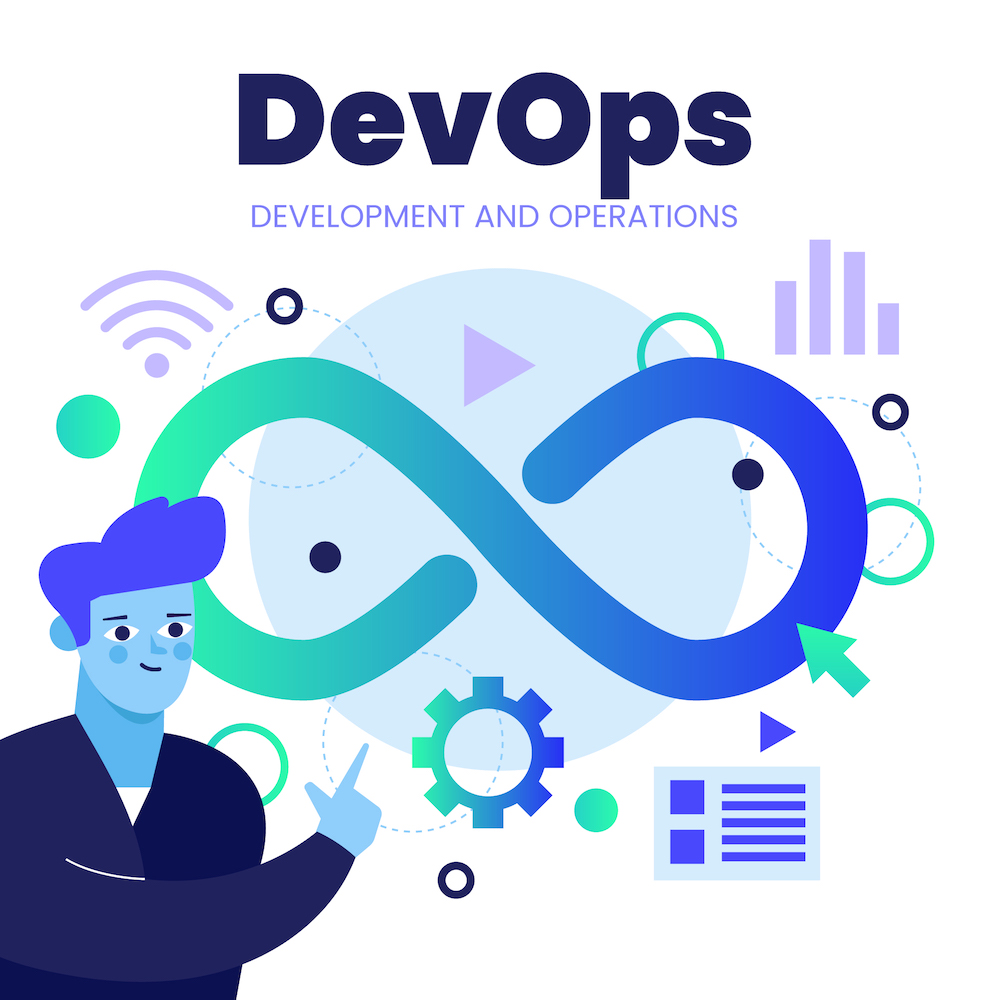- Home
- /
- Product Management
- /
- DevOps, Bridging the Gap Between…
Introduction
In the fast-paced world of software development, the need for collaboration and efficiency between development and operations teams has given rise to a transformative approach called DevOps. This blog aims to unravel the mysteries surrounding DevOps, exploring its core principles, practices, benefits, and the essential tools that make it all happen.
What is DevOps?

DevOps is not just a buzzword; it’s a fusion of “Development” and “Operations,” symbolizing a set of practices that bring these traditionally separate functions together. The goal is to create a smoother, more efficient process for building, testing, and delivering software. DevOps emerged in response to the challenges of collaboration and speed in software development.
The Core Principles of DevOps

Collaboration
- DevOps breaks down the walls between development, operations, and other teams. It encourages everyone to work together seamlessly.
- Teams share responsibilities, fostering a culture of collaboration and shared goals.
Automation
- Automation is at the heart of DevOps. It involves using tools to streamline repetitive tasks, reduce errors, and improve efficiency.
- By automating processes, developers, and operators can focus on more strategic and creative aspects of their work.
Continuous Integration (CI)
- CI involves frequently merging code changes into a shared repository. This helps catch integration issues early in the development process.
- The continuous integration process aims to create a more stable and reliable codebase.
Continuous Deployment (CD)
- CD takes the CI process further by automating the deployment of code changes to production after passing automated tests.
- This ensures a smooth and reliable release process, allowing for faster delivery of features and updates.
Monitoring and Feedback
- Utilizing monitoring tools helps gain insights into how an application is performing in real-time.
- Quick feedback loops allow for continuous improvement, addressing issues promptly and enhancing overall software quality.
Key Practices of DevOps

Infrastructure as Code (IaC)
- Treating infrastructure configurations as code enables the automation of infrastructure management.
- IaC promotes consistency, version control, and scalability.
Microservices Architecture
- Breaking down large applications into smaller, independently deployable services.
- Microservices enhance scalability, agility, and ease of maintenance.
Collaboration and Communication
- Encouraging open communication and collaboration between teams.
- Cross-functional teams promote shared responsibility and understanding.
Getting Started with DevOps

If you’re interested in adopting DevOps practices in your organization, there are many resources available to help you get started. Here are a few tips:
Start small
Begin by identifying a specific area of your development process that could benefit from improvement. Don’t try to change everything at once.
Focus on collaboration
Encourage communication and collaboration between developers and operations teams.
Invest in the right tools
There are many DevOps tools available that can help you automate tasks, improve communication, and monitor your systems.
Embrace a culture of learning
DevOps is an ongoing journey, not a destination. Be willing to experiment and learn from your experiences.
By adopting a DevOps approach, you can break down the barriers between development and operations, leading to faster software delivery, improved quality, and a more efficient and productive work environment.
Benefits of DevOps

Faster Time-to-Market
- Streamlined processes and automation result in shorter development and deployment cycles.
- Organizations can release updates more frequently, keeping pace with market demands.
Improved Collaboration
- Breaking down silos fosters a culture of collaboration.
- Better communication between teams leads to improved understanding and shared goals.
Increased Reliability
- Automation reduces manual errors, ensuring a more reliable deployment process.
- Continuous monitoring allows for proactive issue detection and resolution.
Enhanced Scalability
- Microservices architecture and automated infrastructure provisioning support scalable and flexible solutions.
Essential DevOps Tools

Version Control
CI/CD
Configuration Management
Containerization
Monitoring and Logging
Collaboration
Frequently Asked Questions (FAQs) on DevOps

Why is DevOps important?
DevOps promotes faster and more reliable software delivery. It enhances collaboration between development and operations teams, automates repetitive tasks, and ensures a continuous feedback loop for constant improvement.
What are the core principles of DevOps?
The core principles of DevOps include collaboration, automation, continuous integration (CI), continuous deployment (CD), and monitoring/feedback. These principles aim to break down silos, automate processes, and maintain a focus on delivering high-quality software.
How does DevOps improve collaboration?
DevOps breaks down the traditional barriers between development and operations teams, fostering a culture of collaboration. Shared responsibilities, open communication, and cross-functional teams contribute to improved teamwork.
What is Continuous Integration (CI) in DevOps?
Continuous Integration involves regularly merging code changes into a shared repository. This practice helps detect and fix integration issues early in the development process, ensuring a more stable codebase.
What is Continuous Deployment (CD) in DevOps?
Continuous Deployment is an extension of Continuous Integration, automating the process of deploying code changes to production after passing automated tests. This ensures a reliable and rapid release process.
How does DevOps handle infrastructure management?
DevOps employs Infrastructure as Code (IaC), treating infrastructure configurations as code. This enables the automation of infrastructure provisioning, ensuring consistency, version control, and scalability.
What is Microservices Architecture in DevOps?
Microservices Architecture involves breaking down large applications into smaller, independently deployable services. This approach enhances scalability, agility, and ease of maintenance.
What are the benefits of DevOps?
DevOps offers faster time-to-market, improved collaboration, increased reliability, and enhanced scalability. It allows organizations to release software updates more frequently, respond to market demands, and maintain a high level of quality.
What are some essential DevOps tools?
Key DevOps tools include version control tools like Git, CI/CD tools such as Jenkins and GitLab, configuration management tools like Ansible and Puppet, containerization tools like Docker and Kubernetes, and collaboration tools like Slack and Microsoft Teams.
Is DevOps only for large organizations?
No, DevOps principles can be applied by organizations of all sizes. While larger enterprises may have more complex environments, the fundamental concepts of collaboration, automation, and continuous improvement are beneficial for any development team.
How does DevOps contribute to security?
DevOps promotes the concept of DevSecOps, integrating security practices into the software development lifecycle. This ensures that security is considered from the beginning, leading to more secure and resilient applications.
Conclusion

DevOps is more than a set of tools; it’s a cultural shift that promotes collaboration, automation, and continuous improvement. By adopting DevOps practices, organizations can enhance the efficiency of their software development processes, delivering high-quality software faster and more reliably. Embracing DevOps is not just a trend; it’s a mindset that propels software development into a more collaborative and innovative future.












Leave a Reply